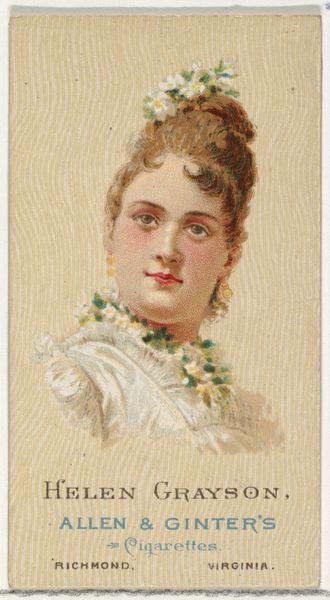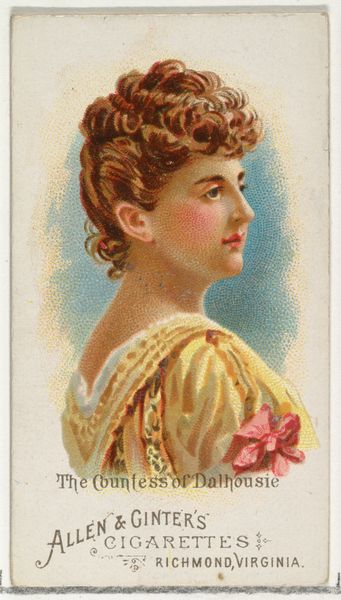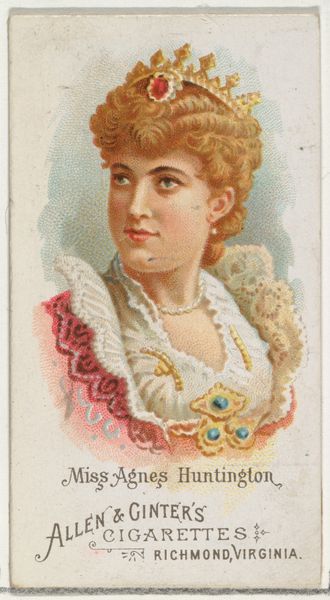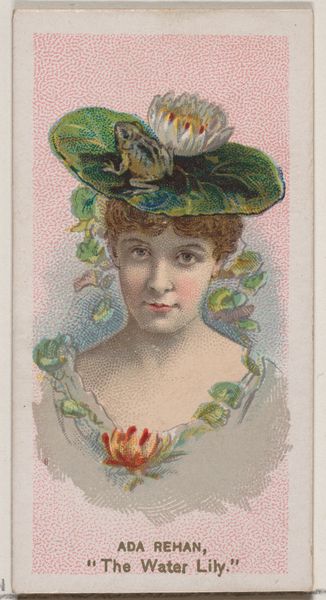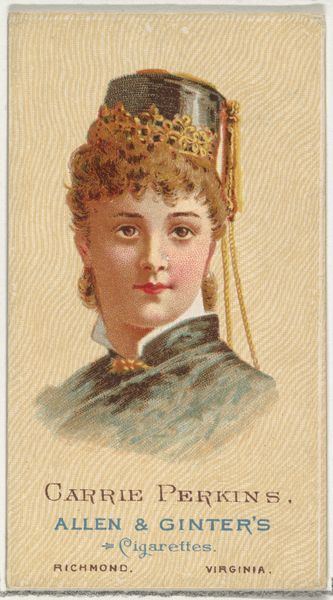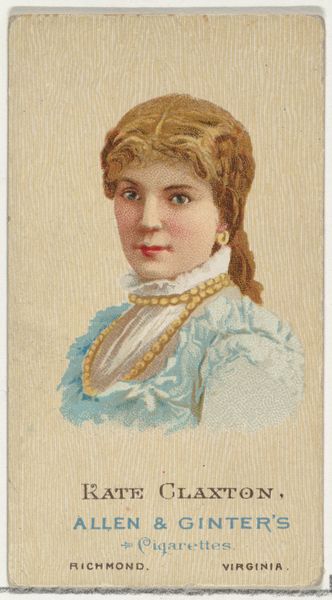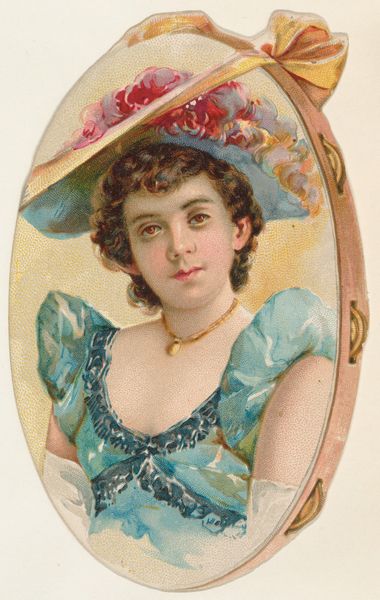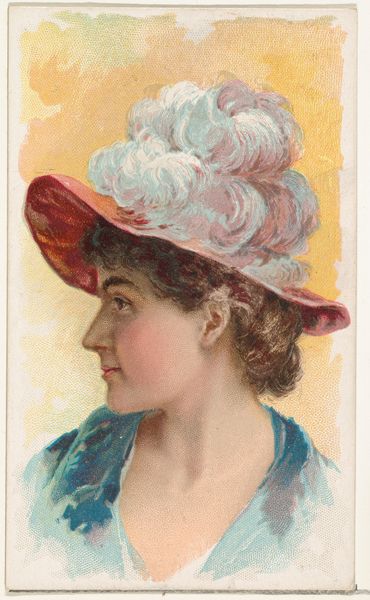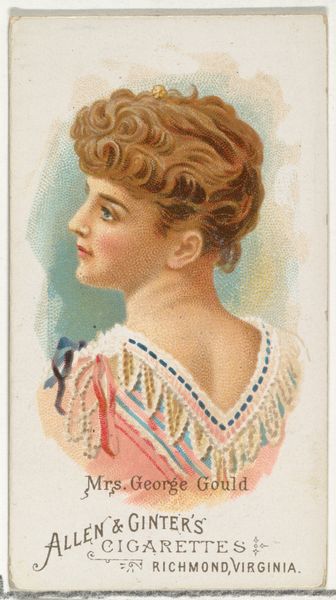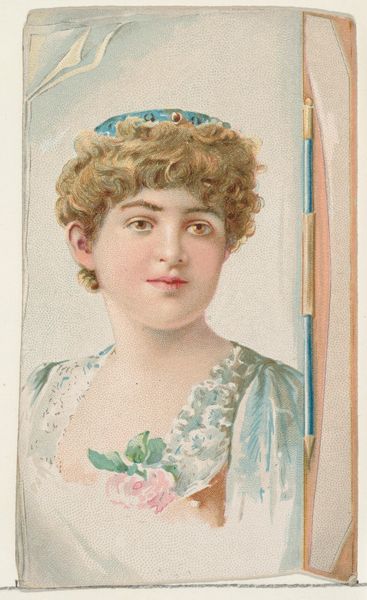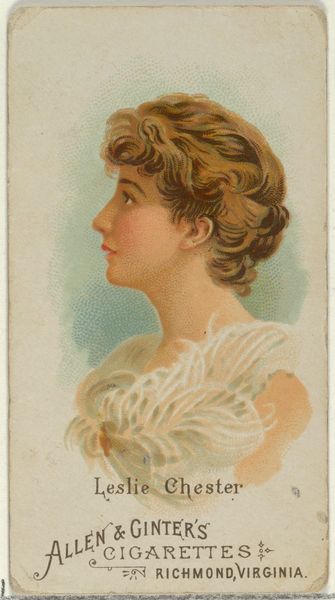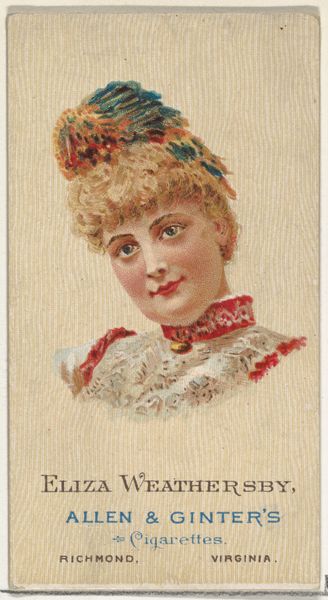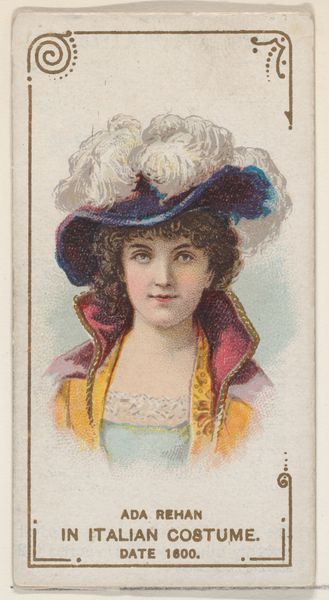
Mrs. Schaffer, from World's Beauties, Series 2 (N27) for Allen & Ginter Cigarettes 1888
0:00
0:00
drawing, lithograph, print
#
portrait
#
drawing
#
lithograph
# print
#
figuration
#
coloured pencil
#
academic-art
Dimensions: Sheet: 2 3/4 x 1 1/2 in. (7 x 3.8 cm)
Copyright: Public Domain
Curator: What strikes me first is the delicacy. The soft pastels and the gentle, almost hesitant lines. Editor: We are looking at "Mrs. Schaffer" from the World's Beauties series by Allen & Ginter Cigarettes, a lithograph print from 1888. It is currently held at the Metropolitan Museum of Art. It’s one of a series of collectible cards inserted into cigarette packs at the time. Curator: The composition, of course, adheres to classical portraiture, with a clear emphasis on idealized beauty. However, there's also an almost naive quality to the rendering of textures – the lace, the feathers – as if striving for detail but constrained by the medium. Editor: Precisely. These cards were instruments of popular culture. The ‘World’s Beauties’ tapped into the Victorian fascination with celebrity and exoticism, reflecting societal values related to gender and status but it was mass-produced. Curator: Observe how the colour palette reinforces this. The skin tones, the pastels in her hat, the very calculated way the background barely separates itself from the portrait, which contributes to the flattening of form. A somewhat superficial prettiness as the focal point. Editor: Absolutely. Consider also how such images, circulated so widely, would influence perceptions of beauty and aspiration, shaping cultural ideals and reflecting them at the same time. This card, therefore, embodies a particular intersection of commercialism, art, and societal values of the time. Curator: And that hat! The construction of the millinery and the artificial plume scream for attention, it acts almost as a frame to elevate the head and draw us to the facial structure and composure. Editor: So, the ‘trivial’ object then tells an involved story. Not just of image making, but it invites investigation into the social history of the period, and how people visualized not only themselves, but constructed ideas around ‘the beautiful’. Curator: A close formal analysis does indeed highlight that dichotomy; surface appeal masking layers of sociocultural messaging within, quite cleverly packaged within a small space. Editor: Indeed, the intersection of consumerism and cultural ideals makes this a particularly valuable document, proving even an ostensibly decorative art form reveals so much more upon consideration.
Comments
No comments
Be the first to comment and join the conversation on the ultimate creative platform.
